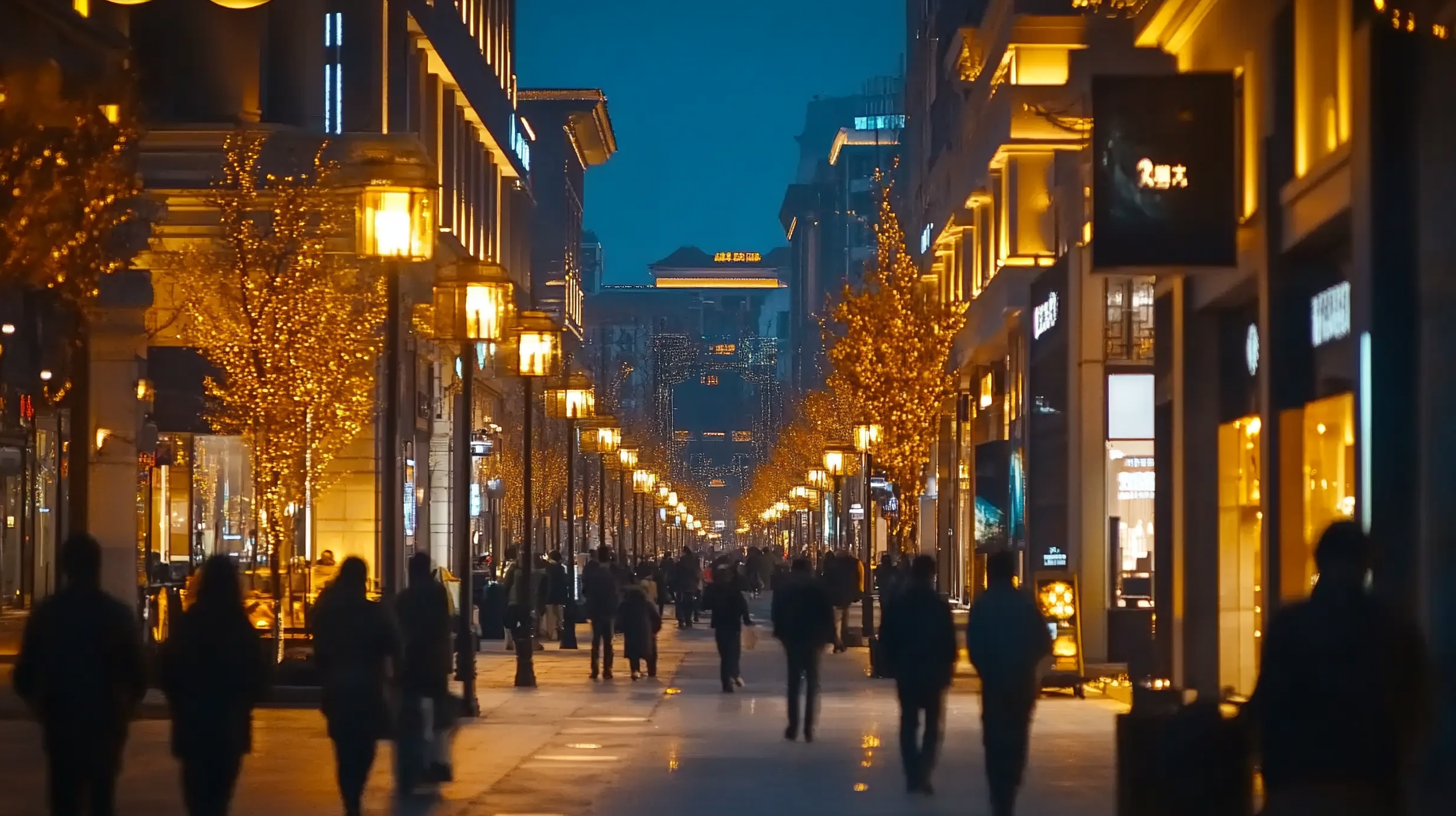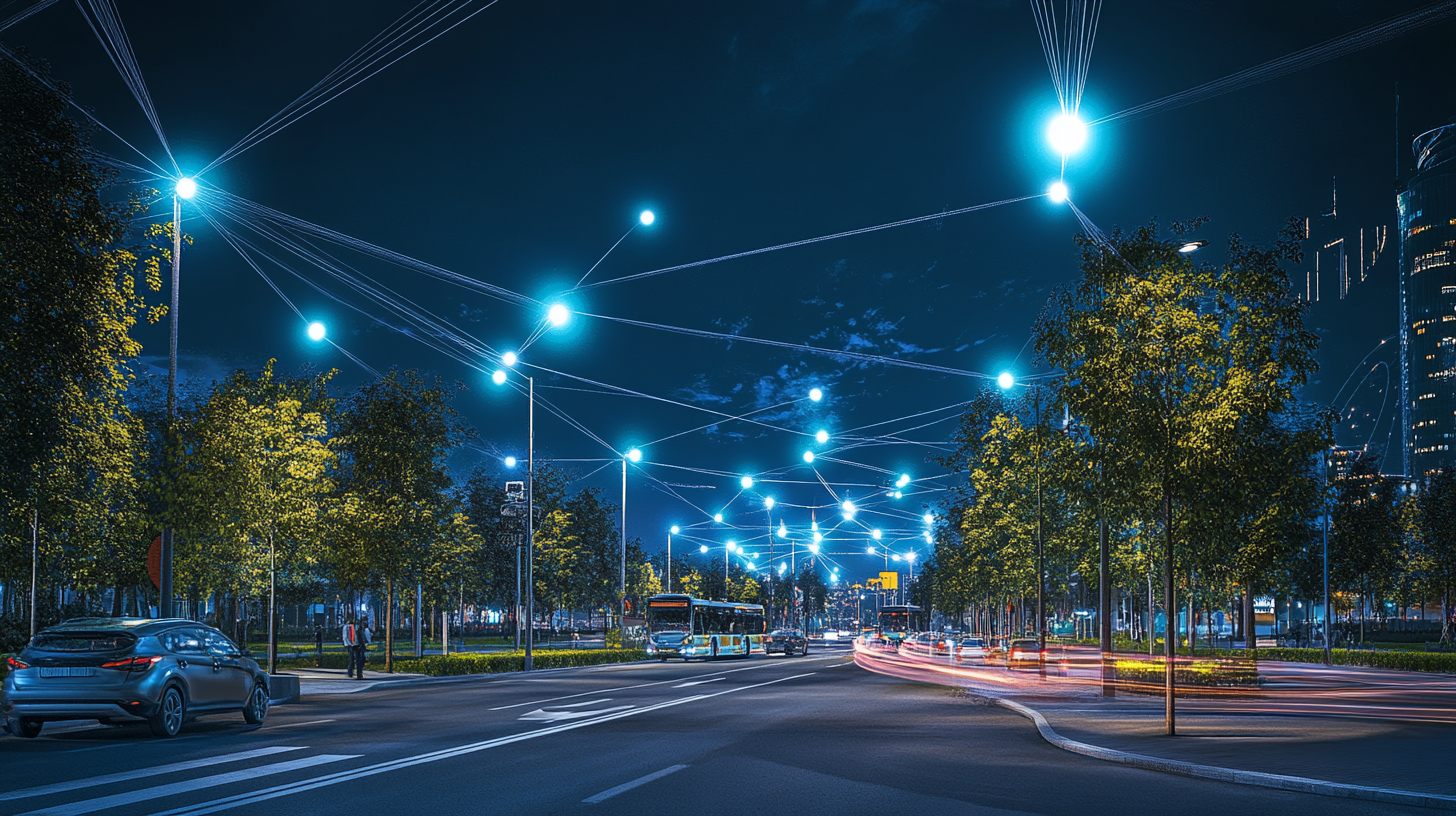Navigating the Future of Street Lighting in 2025 Key Trends and Strategies for Global Buyers
As we look towards 2025, the evolution of street lighting is becoming increasingly pivotal in urban planning and sustainable development. According to a recent report by the International Energy Agency, street lighting accounts for approximately 20% of municipal electricity consumption globally, underscoring the urgency of optimizing energy efficiency and adopting smart technologies. The growing emphasis on sustainability and the reduction of carbon footprints aligns with the global drive toward the implementation of LED lighting, which can reduce energy usage by up to 50%, thus presenting a significant opportunity for cities worldwide to enhance their infrastructure while meeting environmental targets.
In this dynamic landscape, key trends such as the integration of IoT solutions and smart city initiatives are redefining traditional street lighting approaches. A study by Markets and Markets predicts that the smart street lighting market will reach USD 14.5 billion by 2025, with a compound annual growth rate (CAGR) of 25.8% from 2020, reflecting the increasing demand for energy-efficient, intelligent lighting systems. For global buyers, navigating these trends and strategies will be essential to capitalize on innovative solutions that enhance public safety, reduce operational costs, and contribute to more livable urban environments.

Emerging Technologies Shaping Street Lighting in 2025
As we look towards 2025, the field of street lighting is poised to be transformed by emerging technologies that enhance efficiency, sustainability, and connectivity. One of the primary trends shaping this future is the widespread adoption of smart lighting systems. According to a report by the International Energy Agency (IEA), smart street lighting could reduce energy consumption by up to 50% over traditional systems, not only lowering costs but also contributing to more sustainable urban environments. Additionally, the integration of Internet of Things (IoT) technologies is enabling street lights to serve a dual purpose: illuminating roads and gathering data. A recent study by MarketsandMarkets projects that the global smart street lighting market will reach USD 24 billion by 2025, driven by improvements in sensor technologies and real-time data analytics. By utilizing these innovations, cities can optimize lighting based on actual needs, monitor environmental conditions, and even improve public safety through enhanced surveillance capabilities. Moreover, LED technology continues to dominate the landscape, providing not just longevity and reduced energy use but also enhanced flexibility in managing light intensity and color temperature. In 2020, the global LED street lighting market was valued at approximately USD 6.54 billion, and it is expected to grow at a compound annual growth rate (CAGR) of 14.7% from 2021 to 2028, according to Grand View Research. As cities upgrade to LED systems, they can expect significant decreases in their carbon footprints while also benefiting from lower maintenance costs. Ultimately, as we advance towards 2025, urban planners and global buyers must stay ahead of these key trends and strategies to ensure their street lighting solutions are not only technologically advanced but also aligned with sustainable development goals.

Sustainability Initiatives: Green Solutions for Urban Lighting
The future of urban lighting is set to transform significantly by 2025, especially with the increasing emphasis on sustainability initiatives. As cities grapple with rapid urbanization, the demand for green solutions in street lighting has risen. This drive is reflected in the expected expansion of the high-end lighting market, which is predicted to surpass $19.3 billion in 2023, with a compound annual growth rate (CAGR) exceeding 7% from 2024 to 2032. Such growth is primarily fueled by higher disposable incomes and an increasing focus on energy efficiency.
Moreover, the antimicrobial LED panel market is emerging as a key player in sustainable urban lighting, with projections indicating that its value will grow from $2.24 billion in 2024 to approximately $4 billion by 2032, achieving a CAGR of 6.2%. This trend underlines the vital role of innovative lighting solutions in enhancing public health alongside environmental sustainability.
The upcoming outdoor lighting exhibition in Yangzhou emphasizes the industry's commitment to exploring green initiatives for urban lighting. As smart city planning incorporates intelligent transportation systems and the Internet of Things (IoT), the outlook for outdoor lighting appears promising. The market for smart lighting, valued at $15.8 billion in 2024, is expected to witness growth exceeding 19.3% from 2025 to 2034, driven by enhanced connectivity and an increased focus on sustainable urban infrastructure. These developments not only pave the way for energy-efficient lighting solutions but also contribute to the overarching goal of creating environmentally friendly urban spaces.

The Role of Smart City Infrastructure in Street Lighting
As urban areas continue to evolve, the integration of smart city infrastructure into street lighting systems is becoming increasingly vital. By 2025, it is estimated that over 50% of street lights in major cities will be connected to smart networks, offering cities the ability to optimize energy consumption, enhance safety, and improve the overall urban experience. According to a recent report by MarketsandMarkets, the global smart street lighting market is projected to reach $9.9 billion by 2025, growing at a CAGR of 24.8% from 2020.
Smart street lighting goes beyond mere illumination; it serves as a backbone for various smart city applications. These interconnected systems can collect and analyze data, providing city planners with insights into traffic patterns, pedestrian movements, and environmental conditions. For instance, municipalities can adjust lighting based on real-time data, ensuring that areas are well-lit when needed while conserving energy during low-traffic hours. Furthermore, the integration of IoT sensors can improve public safety, as street lights equipped with cameras and emergency response systems can quickly alert authorities if incidents occur.
In terms of energy efficiency, smart street lights using LED technology have been shown to reduce energy consumption by an impressive 80% compared to traditional lighting methods. The adoption of adaptive lighting systems not only contributes to sustainability efforts but also lowers operational costs for cities. As urban populations grow, the demand for innovative street lighting solutions that support advanced infrastructure will become a key priority for global buyers looking to enhance their cities' livability and resilience.

Cost-Effective Strategies for Global Street Lighting Purchases
As we approach 2025, the landscape of street lighting is set to evolve dramatically, presenting essential cost-effective strategies for global buyers. With a projected boost in the outdoor LED lighting market, which is anticipated to grow from $22.8 billion in 2023 to $54.7 billion by 2030, stakeholders must adopt strategic purchasing approaches to capitalize on this trend.
Investing in LED technologies not only aligns with sustainability goals but also promises long-term savings through reduced energy costs and maintenance. Buyers should consider upgrading existing infrastructures to LED solutions during renovation phases, as the demand for replacements will drive market growth. Moreover, innovative partnerships and strategic investments are critical as companies look to enhance their product offerings and remain competitive in a rapidly growing sector.
To successfully navigate these transitions, it’s crucial for buyers to keep abreast of new lighting technologies and market insights. Engaging with industry reports, such as those highlighting key player strategies, will provide valuable intelligence. Ultimately, the choice to invest in modern lighting solutions should be underpinned by comprehensive research and a clear understanding of long-term benefits, ensuring that spending today provides significant returns in efficiency, sustainability, and functionality for future urban environments.
Navigating Regulatory Changes and Standards in Lighting Solutions
As we look towards 2025, the landscape of street lighting is undergoing significant transformation, heavily influenced by regulatory changes and evolving standards in lighting solutions. The anticipated growth in the global LED market, projected to reach a value of $6.333 billion in 2024 and experience a compound annual growth rate (CAGR) of 10.6% from 2025 to 2034, underscores the pressing need for municipalities and businesses to adopt efficient lighting technologies. This shift towards LED is not merely a trend; it's a necessary movement towards sustainability and cost-effectiveness, as municipalities aim to reduce energy consumption and adhere to stricter environmental regulations.
Moreover, the increasing competitive nature of the lighting industry has prompted many companies to seek international market opportunities. For instance, recent developments indicate a surge in demand for innovative lighting solutions in regions like the Middle East and Southeast Asia. This globalization of the lighting market necessitates that buyers remain informed about regional regulatory changes and standards, which can vary drastically from one market to another. As companies innovate their offerings to comply with local regulations, adopting flexible and scalable LED technologies will be vital for success in these diverse landscapes.
At the same time, specialized sectors, such as automotive lighting, are also witnessing transformative innovations due to collaborations among leading tech companies. Such advancements highlight the potential cross-industry benefits of lighting technology, which could further influence the public street lighting solutions of tomorrow. As the industry adopts a more integrated approach, staying ahead of regulatory changes and adapting to innovative lighting standards will be essential for global buyers looking to navigate the future of street lighting effectively.

